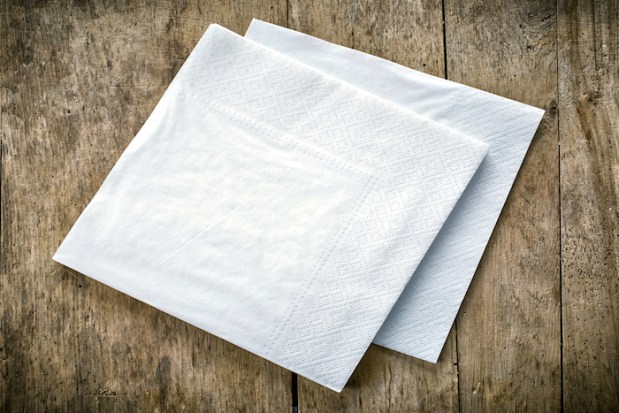Millennials Are Breaking Up With Napkins For Paper Towels

Though it was their grandparents that gave rise to modern American consumer culture, millennials often get dinged for being too obsessed with having the latest and greatest gadgets. While it’s true that Apple and other smartphone makers have developed nearly irresistible cults of personality around their brands, there’s evidence that millennials are just as quick to drop the essential items of generations gone by if it suits their needs.
And it’s becoming overwhelmingly clear that paper napkins no longer do.
The most pressing case for the youth of America’s lack of interest in paper napkins comes from a Mintel survey on household paper product usage for Feb. 2016. Just 56 percent indicated that they’d even purchased paper napkins over the last six months. It’s not as if millennials are wiping their dirty hands on their ripped designer jeans, though. No, they’ve found a replacement for their parents’ and grandparents’ disposable napkins, as 86 percent reported buying paper towels during the same period.
Is this a failure of the paper napkin industry to keep up with the times? Or, as Apartment Therapy writer Nancy Mitchell told The Washington Post, is the long, slow death of the disposable napkin more of an indication that the next generation of consumers no longer have need of them?
“I think napkins have been a bit of a fatality of the trend towards more informal entertaining,” Mitchell said. “Dinner parties are a lot less common than they used to be, and when people do have them, they focus more on the food itself than on setting the table. So, even people who are really environmentally conscious wind up buying paper napkins (or using paper towels) because people just don’t own napkins anymore.”
It might not just be that millennials and other younger consumers aren’t hosting enough at-home get-togethers where they need to show off their design skills; it might be that they’re just eating less at home period. A 2015 report from Restaurant Marketing Labs found that the average millennial spends $174 per month on eating out, $21 more than the average non-millennial.
With bigger portions of their budgets going towards meals out of the house, disposable napkins are facing a two-front war for survival. Less money in millennial consumers’ pockets means they have shrinking financial leeway to buy two kinds of absorptive, dinner table-appropriate paper products, and generational transitions that favor on-the-go eating rather than sit-down meals mean that a larger, less decorative paper towel could be a better fit for a millennial eater’s lifestyle.
It’s an unexpected and consternating problem for napkin and paper product manufacturers, like Dan Nirenberg, marketing director for napkins at Georgia-Pacific, a worldwide leader in pulp and paper product manufacturing. Nirenberg told The Washington Post that the industry hasn’t seen such a change in its fortunes since the 1950s, when cloth napkins that had to be laundered and ironed gave way to the increased convenience of paper ones consumers could simply throw away and replace. In 2016, however, Georgia-Pacific is confronted with the challenge of making paper napkins as equally convenient and indispensable as the paper towels that 86 percent of millennial eaters are trying to replace them with.
“We are trying to figure out how to develop napkin holders that appeal to a younger generation,” Nirenberg said. “If you put them in a holder, you are more likely to grab them.”
A more convenient holder for a product whose perceived convenience is rapidly falling — it seems like a half-measure unlikely to work. After all, if millennials are doubling up on their uses of paper towels explicitly to save themselves from wasting money on napkin purchases, trying to get them to buy an additional item that makes them enjoy the original one seems like a messy way to go about securing napkins’ salvation.
